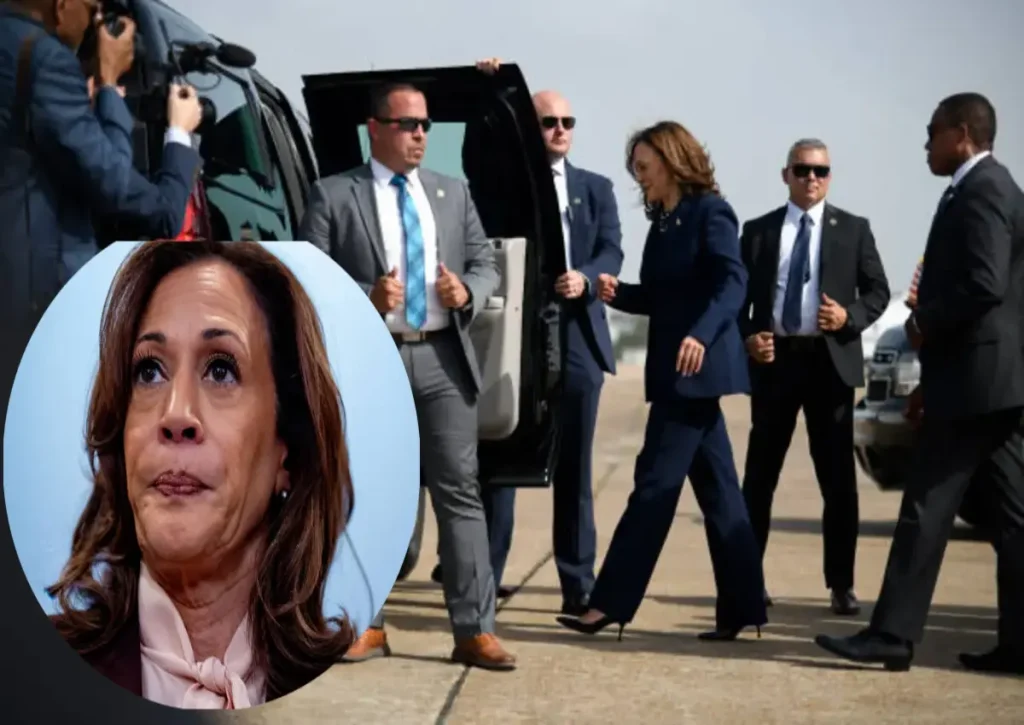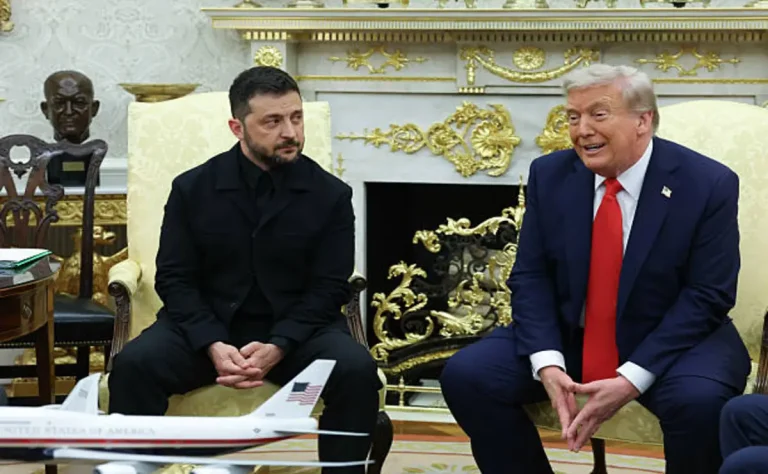
Kamala Harris pictured with Secret Service agents at George Bush Intercontinental Airport in Houston, Texas, amid renewed debate on vice-presidential protection. Andrew Harnik/Getty Images/Mark Felix / AFP
EPICSTORIAN — Vice President Kamala Harris has joined a rare group of U.S. leaders whose federal security protections end within months of leaving office.
Harris’ loss of extended security underscores a longstanding gap in American protective policy for senior elected officials.
Only one modern vice-president, Dick Cheney, received extended protection beyond the six-month limit, granted under Barack Obama’s administration.
Kamala Harris Security Withdrawal in Historical Context
The U.S. Secret Service protection guidelines outline security standards for presidents, vice-presidents, and their families.
Presidents retain protection for life, while vice-presidents transition to private security responsibility after their six-month window expires.
This structure has been debated in Congress and criticized by experts who argue the vice-presidency carries unique security risks.
Harris’ case is drawing comparisons to past precedents, including Cheney’s exceptional coverage and Richard Nixon’s unusual decision to decline lifetime protection.
Dick Cheney’s Exception to Standard Rules
Former Vice President Dick Cheney left office in 2009 after serving under President George W. Bush.
Cheney was granted extended Secret Service protection by President Barack Obama, citing ongoing threats and his role in the Iraq War.
His extension was widely regarded as extraordinary and underscored the discretionary power of the sitting president.
Analysts say Cheney’s case demonstrates how unusual it is for a vice-president to maintain coverage beyond the legal minimum.
Richard Nixon Declines Lifetime Security
In a separate historical example, former President Richard Nixon voluntarily declined lifetime Secret Service protection in 1985.
According to The New York Times archives, Nixon said the decision was intended to reduce costs for taxpayers.
That move marked the only time a president opted out of federal coverage entirely in modern U.S. history.
However, Nixon’s case differed from Harris and Cheney because it involved presidential, not vice-presidential, protections.
Kamala Harris and the Vice-Presidential Gap
Harris’ departure from federal protection emphasizes the difference between treatment of former presidents and vice-presidents.
While presidents are considered enduring national symbols, vice-presidents are left to manage private arrangements once coverage lapses.
Security analysts argue this creates vulnerabilities for figures who remain publicly recognizable and politically active after leaving office.
Harris remains a global political figure, making her security requirements more complex than ordinary private citizens.
Secret Service Policy Under Scrutiny
The Secret Service, founded in 1865, was assigned protective duties for presidents following the assassination of William McKinley in 1901.
Over time, its mandate expanded to include vice-presidents, presidential candidates, and visiting foreign dignitaries.
By law, vice-presidents are entitled to six months of protection after leaving office, unless the president extends the timeline.
The agency maintains discretion but must ultimately follow directives from the president and Congress.
Calls for Policy Reform
Security experts argue the current system fails to reflect modern threats facing political leaders in the digital era.
They point to online radicalization, global terrorism, and political polarization as reasons to reconsider protection standards.
Some lawmakers have suggested extending coverage to all vice-presidents for at least two years after leaving office.
Others propose granting discretionary authority to Congress rather than leaving decisions solely to the White House.
International Comparisons of Leader Security
Other countries maintain different approaches to security for former leaders.
In the United Kingdom, former prime ministers may receive taxpayer-funded security based on threat assessments.
In France, former presidents and prime ministers are typically granted extended protection due to their ongoing public roles.
Analysts say the U.S. system remains among the strictest in limiting long-term protections for second-ranking leaders.




